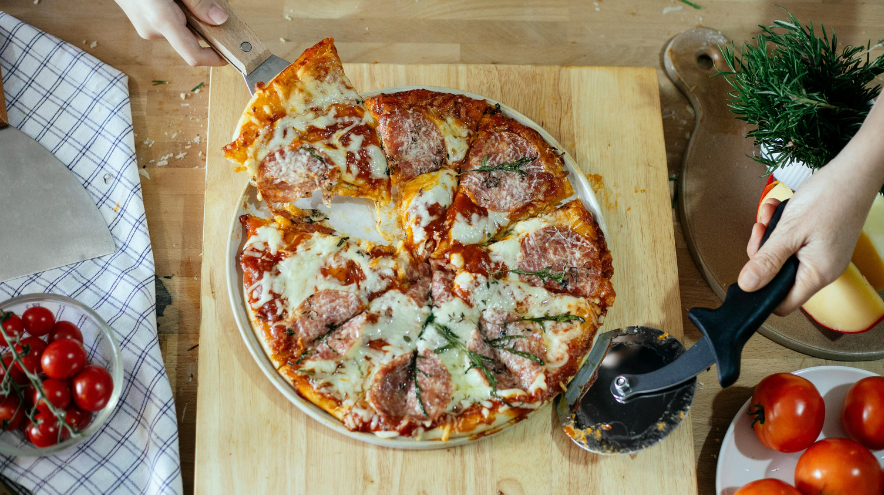Mindful Eating and Intuitive Nutrition Tips

Have you ever thought about how your relationship with food shapes your well-being? Mindful eating and intuitive nutrition can transform how we connect with meals and our bodies. In 2025, these practices feel more relevant than ever. They encourage self-compassion, help us tune out diet culture, and promote balance in our daily lives.
Key Takeaways
Pay attention to how your food tastes and feels. This makes meals more enjoyable and helps you know when you’re full.
Notice when your body feels hungry or full. This can help you eat better and feel good about yourself.
Eat in a calm place. Lower the lights and avoid distractions to enjoy your food and stay focused.
Understanding Mindful Eating and Intuitive Nutrition
Defining Mindful Eating
Mindful eating is all about being present during meals. It’s when you focus on the taste, texture, and smell of your food without distractions. I’ve found that this practice helps me truly enjoy my meals. Instead of rushing through lunch while scrolling on my phone, I take a moment to notice how my body feels. This approach encourages me to eat only when I’m hungry and stop when I’m full. It’s not about rules or restrictions—it’s about awareness.
Benefits for a Healthy Relationship with Food
When I started practicing mindful eating, my relationship with food improved. I stopped labeling foods as “good” or “bad.” Research shows that eating with others can enhance this experience. Sharing meals with friends or family creates a supportive atmosphere. It also helps us become more aware of portion sizes and food choices. Plus, being mindful during meals can lead to healthier decisions overall.
What Is Intuitive Eating?
Intuitive eating takes things a step further. It’s about trusting your body’s natural hunger and fullness cues. Unlike traditional diets, intuitive eating doesn’t involve strict meal plans or calorie counting. Instead, it encourages you to enjoy your favorite foods in moderation. For me, this means I can have a slice of cake without guilt. It’s a balanced approach that focuses on long-term well-being.
Key Differences Between Intuitive Eating and Dieting
Here’s how intuitive eating stands out compared to traditional dieting:
| Aspect | Intuitive Eating | Traditional Dieting |
|---|---|---|
| Philosophy | Focuses on instinct, emotion, and rational thought | Promises short-term results with restrictive rules |
| Approach | Encourages listening to body cues like hunger | Often involves rigid control and specific meal plans |
| Long-term Success | Aims to create a new framework for sustainable eating | Typically does not change long-term thinking about food |
Intuitive eating rejects the diet mentality. It’s about making peace with food and respecting your body. Diets, on the other hand, often rely on external rules. I’ve noticed that intuitive eating feels more freeing and sustainable.
Practical Tips for Mindful Eating
Create a Peaceful Eating Space
I’ve noticed that the environment where I eat can make a huge difference in how I feel about my meals. Creating a peaceful eating space helps me slow down and enjoy the moment. Here’s what I do:
I dim the lights and sometimes light a candle to create a calming atmosphere.
I put away my phone and laptop to avoid distractions.
When I eat with family or friends, I focus on the conversation and connection.
I try to put my fork down between bites. It helps me savor the flavors and prevents me from rushing.
I chew my food thoroughly—about 20 times per bite. This not only helps with digestion but also lets me fully enjoy the textures and tastes.
These small changes have helped me build a more peaceful connection with food.
Tune Into Hunger and Fullness Cues
Listening to my body’s natural hunger signals has been a game-changer. I’ve learned to eat when I’m hungry and stop when I feel satisfied—not stuffed. Research shows that tuning into these cues can improve eating habits and even boost body image. It’s also linked to fewer symptoms of disordered eating and better mental health.
| Evidence | Description |
|---|---|
| Internal Signals | Using hunger and fullness cues is linked to greater body positivity, higher self-esteem, and maintaining a healthier weight. |
| Intuitive Eating | Eating in response to physical hunger and stopping when full promotes healthier habits. |
When I pay attention to these signals, I feel more in control of my eating and less stressed about food choices.
Savor Your Meals Slowly
Eating slowly has been one of the easiest ways for me to practice mindful eating. I take small bites and focus on the flavors and textures. Is it sweet, salty, or spicy? Is it crunchy or creamy? I try to notice every detail. This makes my meals more enjoyable and helps me feel full without overeating.
Avoid Distractions While Eating
I used to eat while scrolling through my phone or watching TV. But I’ve realized that distractions make it harder to notice when I’m full. Now, I make an effort to eat without screens. I focus on the food in front of me and how it makes me feel. It’s amazing how much more satisfying meals can be when I’m fully present.
Intuitive Eating Principles for Body Image
Reject the Diet Mentality
Rejecting the diet mentality was one of the most freeing steps I’ve taken. I stopped chasing quick fixes and started focusing on what my body truly needed. Diets often come with rigid rules that leave us feeling guilty when we “fail.” Instead, I’ve learned to trust my body and let go of those external pressures.
When I stopped labeling foods as “good” or “bad,” I noticed a shift in my emotions around eating. Food became less about control and more about nourishment. This change helped me embrace body positivity and appreciate my body for what it can do, not just how it looks.
Tip: If you find yourself stuck in the diet mentality, try asking, “What does my body need right now?” This simple question can help you reconnect with your instincts.
Honor Hunger and Fullness
Learning to honor my hunger and fullness cues took time, but it’s been worth it. I started by checking in with myself before and after meals. Am I truly hungry? Am I satisfied? Slowing down during meals helped me recognize when I’d had enough.
Here’s what worked for me:
I eat slowly so my brain has time to register fullness.
I use a hunger/fullness scale to gauge how I feel before and after eating.
I take breaks during meals to reflect on whether I’m still hungry.
It’s not about perfection. Some days, I overeat or don’t notice my cues right away. That’s okay. Honoring hunger and fullness is a practice, not a rulebook.
Make Peace with Food Choices
Making peace with food was a game-changer for me. I used to feel guilty about eating certain foods, but I’ve learned to let go of those emotions. Now, I allow myself to enjoy all foods without judgment.
Here’s how I did it:
I brought awareness to when I felt food guilt and asked myself why.
I gave myself permission to enjoy food without restrictions.
I practiced compassionate curiosity, reflecting on my choices without criticism.
This approach helped me reduce anxiety around eating and focus on what truly satisfies me. It’s amazing how much lighter I feel when I’m not carrying guilt about food.
Embrace Joy and Satisfaction in Eating
Eating should be joyful! I’ve started paying attention to the flavors, textures, and overall experience of my meals. When I savor my food, I feel more connected to my body and emotions.
Food isn’t just fuel—it’s a source of pleasure. I’ve learned to revel in the satisfaction that comes from eating something I love. Whether it’s a warm bowl of soup or a slice of cake, I let myself enjoy the moment. This shift has deepened my appreciation for food and strengthened my relationship with it.
Note: Finding joy in eating doesn’t mean ignoring nutrition. It’s about balancing nourishment with enjoyment.
Sustainable Habits for Long-Term Health
Focus on Consistency, Not Perfection
I’ve learned that consistency matters more than perfection when it comes to healthy eating habits. Trying to be perfect all the time only left me feeling stressed and burned out. Instead, I focus on small, consistent actions that I can stick with. For example, I aim to include vegetables in most meals, but I don’t beat myself up if I miss a day.
Here’s why consistency works:
It creates sustainable changes over time.
It takes the pressure off, making healthy habits more enjoyable.
It allows flexibility, which helps me adapt when life gets hectic.
Small steps build momentum and keep me motivated.
This mindset shift has made my journey feel more manageable and rewarding.
Incorporate Self-Care into Eating Routines
I’ve started treating my meals as a form of self-care. Preparing food feels less like a chore when I see it as a way to nourish my body and mind. I plan meals that I enjoy and take time to sit down and eat without rushing. Sometimes, I even play relaxing music while I cook. These little acts of care make a big difference in how I feel about food.
Balance Nutrition with Flexibility
For me, balance means eating nutritious meals most of the time while still enjoying my favorite treats. I’ve stopped labeling foods as “good” or “bad.” Instead, I focus on how different foods make me feel. A salad might energize me, while a slice of pizza brings comfort. Both have a place in my life. This flexible approach keeps me from feeling restricted and helps me stay on track.
Celebrate Small Wins Along the Way
Celebrating progress keeps me motivated. I track small changes, like feeling more energetic or noticing my clothes fit better. I also set achievable goals, like trying a new recipe or drinking more water. When I hit a milestone, I reward myself with something non-food-related, like a new book or a relaxing spa day. Sharing these wins with supportive friends makes the journey even more enjoyable.
Remember, every small step counts. Progress, no matter how small, is still progress.
Mindful eating and intuitive nutrition have transformed how I view food and my body. Being present during meals helps me connect with hunger cues and enjoy food without guilt. Start small—keep a food journal or eat without distractions. Remember, progress takes time. Be patient and kind to yourself. You’ve got this!
https://focusofwellness.com/index.php/2024/09/09/12-week-fitness-transformation-program/
FAQ
What’s the difference between mindful eating and intuitive eating?
Mindful eating focuses on being present during meals. Intuitive eating goes deeper by encouraging trust in hunger and fullness cues. Both help build a healthier relationship with food.
How do I start practicing mindful eating?
Start small! Eat without distractions, chew slowly, and notice flavors. Pay attention to how your body feels before, during, and after meals.
Tip: Try journaling your eating experiences to track progress.
Can I still enjoy treats with intuitive eating?
Absolutely! Intuitive eating encourages balance. You can enjoy treats without guilt while also nourishing your body with wholesome foods.
Note: Moderation is key—listen to your body’s needs.







